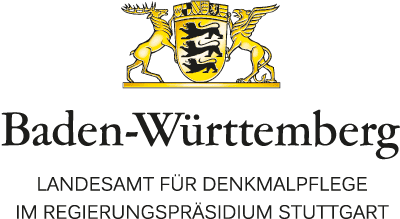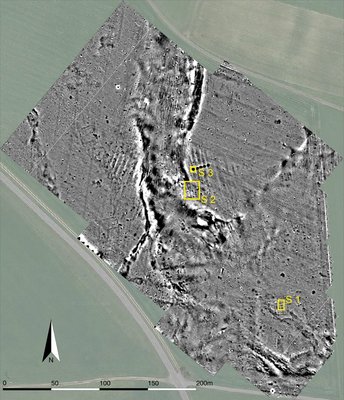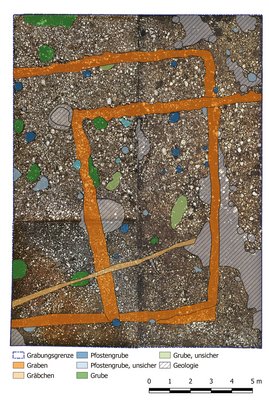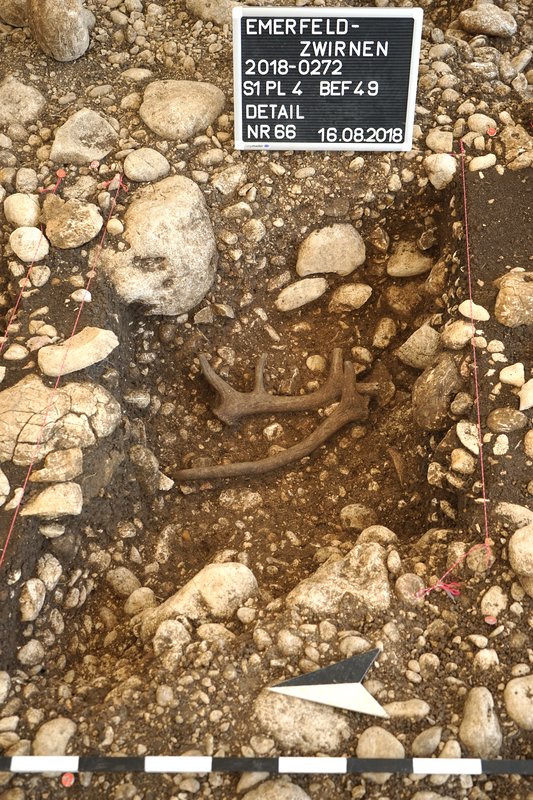Langenenslingen-Emerfeld - An Extensive Rural Settlement
About 2.6km northeast of the Alte Burg lies an extensive Urnfield to Hallstatt period settlement. It lies on the southern edge of the Swabian Alb near Langenenslingen-Emerfeld, and was brought to light by prospections, geophysical measurements and excavations carried out between 2018 and 2020. The first archaeological finds from Emerfeld were discovered by volunteer archaeologist Ferdinand Pfannstiel, who recovered Metal Age finds in 2001 in the course of land consolidation measures.
The excavations took place in three areas. In the north, in sections 2 and 3, a 6.4x7.9m house ground-plan and firing pit were investigated. While the pit belonged to the Hallstatt period, according to radiocarbon results, the house dated to the transition from the Urnfield to the Hallstatt period. In the south about three quarters of the 13x13m area have been investigated so far. Trenches have been preserved from the structure, in which evidence of vertical standing posts was discovered in some places. In addition, it was found that the floor plan was intersected by another angular system of trenches, which may have come from a similar structure. According to radiocarbon dated, both floor plans belong to the Hallstatt period.
Among the archaeological material found so far, some particular objects stand out, indicating cultic activities in this area. These include several ceramic deposited on a pit bottom. Furthermore, two deer antlers, several miniature vessels, and two clay coils were unearthed from the area of the pit structures. The excavated firing pit represents one of a total of five juxtaposed specimens visible in the magnetometry survey. Such rows of pits are known from a number of other metal age sites. The construction of these burning pits, often containing more than a hundred kilos of stones, could be associated with collective events in which, among other things, common meals were partaken of. It thus seems that the Emerfeld site was an extensive settlement site, in which there were also areas for public and ritual activities.
References: Abele u. a. 2018; Hansen u. a. 2020b.




